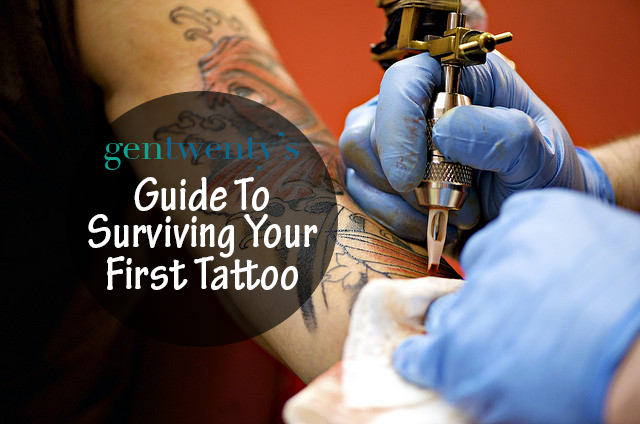Everything You Need to Know About Getting Your First Tattoo
Choosing a Reputable Tattoo Shop
When looking to get your first tattoo, one of the most important decisions is choosing a reputable tattoo shop. Start your search by checking online reviews of local shops. Look for shops that have been in business for many years and have a good reputation for safety, cleanliness and high-quality work. Drop by during business hours to check out the facilities and see artists at work. Make sure to thoroughly review each artist’s portfolio to see examples of their style and skill level. Ask how long they have been tattooing and what type of tattoos they specialize in. An experienced artist who has tattooed similar styles to what you want is ideal for your first tattoo. Consider booking a consultation to meet the artist and discuss your design ideas. Listen to any suggestions they provide to improve the design, as tattoo artists are professionals with valuable feedback.

Considering Price and Booking Your Appointment
Price is another important factor when choosing your first tattoo artist. While the lowest price shouldn’t be the only deciding factor, a reputable tattoo shop generally charges between $150-200 per hour. You should also factor in the size and complexity of the design when estimating costs. Avoid shops with unusually low prices, as quality may be compromised. When you have selected an artist, book your tattoo appointment well in advance. Most reputable shops require deposits. On the day of your appointment, arrive early to sign waivers and discuss stencil placement with your artist. Be sure to properly tip your tattoo artist once the work is complete. Their time and expertise deserves recognition and compensation.
Caring for Your Fresh Tattoo
After getting your first tattoo, proper aftercare is critical to ensure it heals well and lasts. Follow all post-tattoo care instructions provided by your artist to prevent infection. In the first few days, keep it lightly covered with a bandage when possible and avoid direct sunlight. Reapply a thin layer of ointment, such as A&D or tattoo balm, a few times per day. Gently wash the area with mild antibacterial soap and warm water one to two times per day, then pat dry. Avoid soaking in water, hot tubs or swimming pools until it is fully healed, usually 2-3 weeks. Do not pick at any scabbing or flakes of skin. Apply a thin layer of ointment after washing to keep it moisturized as it heals. Within a few weeks, it will have significantly faded in color as it settles into the skin. Be patient during the full healing process of 6-8 weeks before exposing it to sun.
Considering Design Ideas and Placement
When envisioning your first tattoo, put careful consideration into the design concept and placement on your body. Popular first tattoo spots include the upper arm, shoulder, ribs and lower back. However, some placements hurt less than others. Easily covered areas like the outer forearm or calf provide discretion if needed for work or family settings. Start by brainstorming meaningful symbols, quotes, images or designs that hold significance for you. You can get tattooed commemoration for important people or events in your life. Popular first tattoos often feature nature scenes, simple geometric shapes or zodiac signs. Don’t rush the design process. Take your time cultivating ideas that still feel meaningful to you weeks or months later before finalizing with an artist. Plan for your tattoo design to work harmoniously within the space of its placement on your body. Consider how it may appear years later when your skin changes. Highly detailed, fine-line designs may not age as gracefully as bolder, larger scale images. Simplistic black and gray shading or watercolor styles are classic options that often retain their beauty over time. Meet with your selected artist to refine your concept into a cohesive, personalized tattoo.
Deciding on a Design Style
Once deciding on your overall concept, the next step is selecting a design style for your first tattoo. Common styles include black, color, watercolor, dotwork, and traditional/neotraditional. Black work tattoos use just black ink for shading, and work well for detailed linework and shading of realistic or geometric tattoo designs. Color pieces allow creative use of vibrant pigments but require more frequent touch ups. Watercolor tattoos blend wet colors together for a soft aesthetic that obscures lines over time. Dotwork tattoos use stippling techniques for detailed 3D or geometric illusionary effects. Traditional American or Japanese-inspired styles feature bold linework and flat primary colors within defined shapes. For your first tattoo, simpler styles with fewer colors are generally lower risk and easier to maintain over the years. Meet with your selected artist to explore various art styles they specialize in and see samples of healed tattoos. Many artists have their own take on classic styles or ways to personalize templates. Explain your preferences – including desired size, detail level, use of colors – so they can propose design options tailored exactly to your liking. Final line work may differ slightly from initial sketches once applied to skin. Trust your artist’s placement, proportions and adaptations for best tattoo results long term.
Caring for Your Tattoo Over Time
While your first tattoo will feel like a meaningful lasting mark, proper care over the coming years ensures it retains its vibrant appearance as long as possible. After the initial healing period, switch to a gentle moisturizer without fragrances or dyes for daily application to the tattooed area. This keeps the ink vibrant and skin supple. Continue protecting new work from sun damage by applying mineral-based sunscreen SPF 30 or greater whenever outdoors.
Over years of receiving UV exposure or other environmental elements like chlorine, tattoos will naturally fade to varying degrees. Schedule periodic touch-up sessions every 1-5 years with your artist to refresh fading colors and lines. These minor retouches restore tattoos’ brilliance at low cost compared to larger reworks. Consider booking additional tattoo sessions to expand your existing design or start a sleeve or other themed collection on your body.
With proper care, your first tattoo can stay a meaningful work of art on your body for many years to come. Learn from your initial tattoo experience to make informed choices for any future designs. Most importantly, enjoy showing off your new found self-expression through this beautifully-inked body modification that is sure to spark conversation and intrigue for years to follow!
